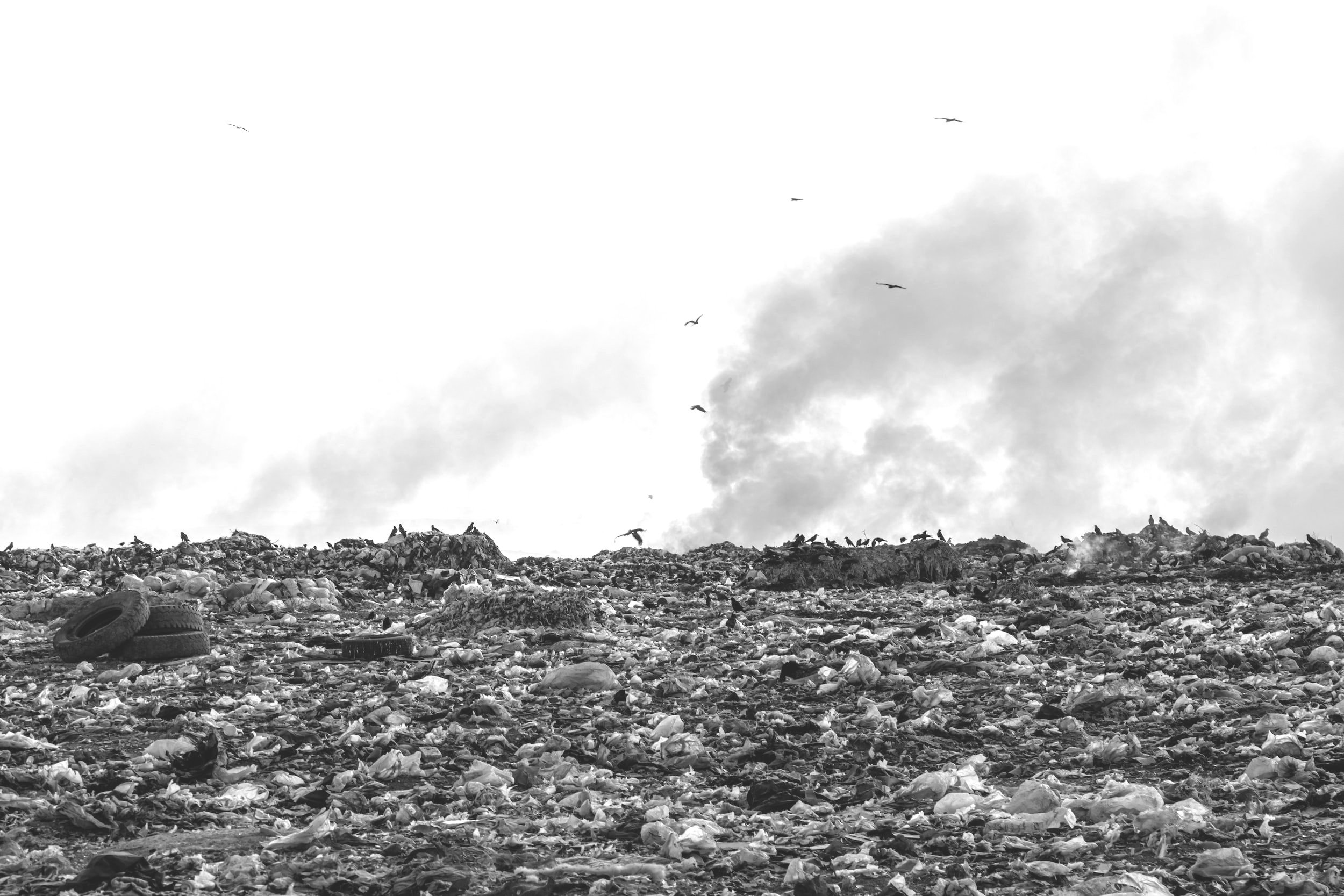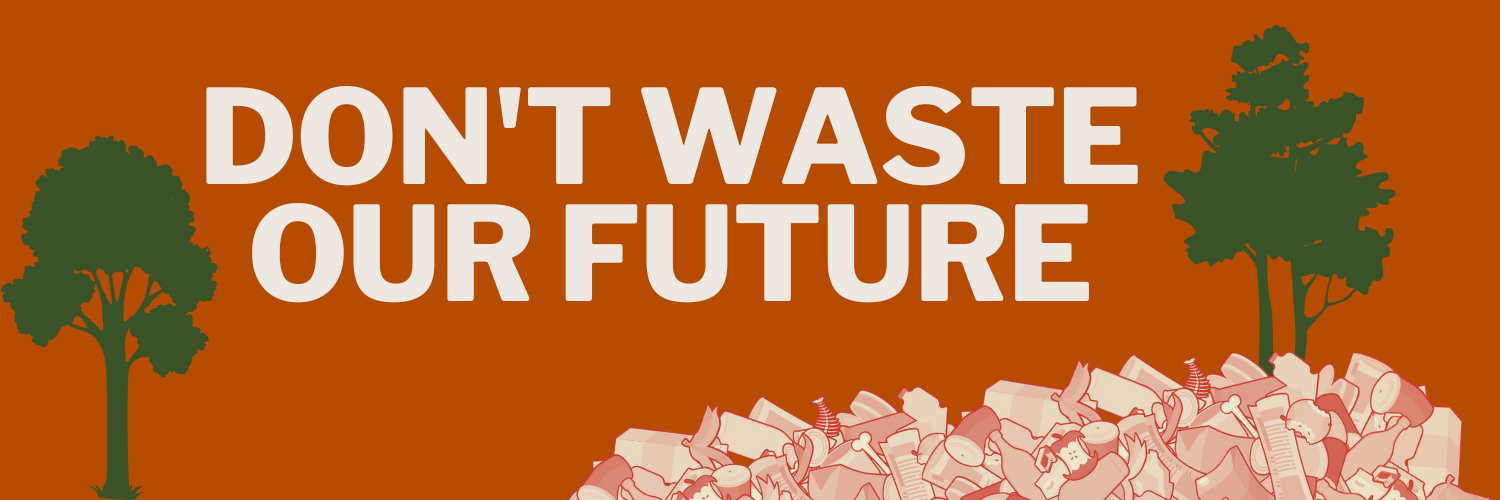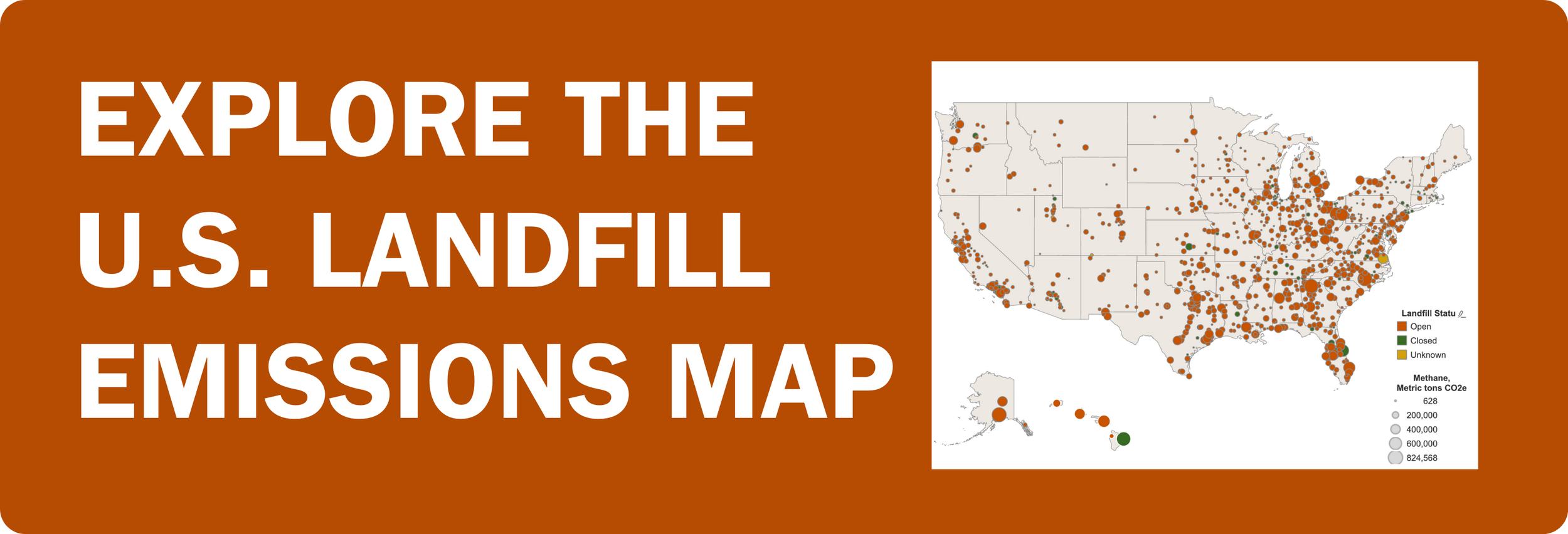
We have a waste problem.
There are MORE than 2,600 municipal SOLID waste landfills in the United States.
Landfills are not just inert piles of garbage. WHEN FOOD, YARD AND PAPER WASTE DECOMPOSEs in an anaerobic environment, IT CREATES METHANE AND CARBON DIOXIDE.
Methane's impact on the climate is immediate and severe. Its 20-year global warming potential is about 80 times greater than CO2. Reducing methane is the most effective way to slow global warming in the near term.
The next 20 years are crucial for meeting global science-based targets, avoiding tipping points, and mitigating other harmful impacts already felt by vulnerable communities.
In 2022, MSW landfills emitted a reported 287 million metric tons of CO2 equivalent of methane — the same climate impact as about 74 coal-fired power plants running for a year. In reality, the problem is much worse; uncovered EPA inspection reports and satellite data show that unchecked levels of methane are hiding in plain sight: odorless and invisible.
In 38 states, a municipal solid waste landfill is the number one largest industrial emitter of methane.
Source: Industrious Labs’ data analysis of EPA GHGRP 2022 data, and 20-year methane global warming potential (GWP) according to IPCC AR6.
Landfills represent a huge opportunity to advance proven solutions to slash greenhouse gas emissions. State and federal governments set the standards for how landfills monitor, capture, and control methane. By strengthening those standards, policymakers can deliver a clear climate win.
State and/or local government can:
Implement policies that catalyze waste prevention and promote food recovery,
Implement mandatory organics recycling programs that divert to composting to avoid new methane emissions from landfills,
Update their emissions regulations for municipal solid waste landfills to minimize methane leaks at existing landfills.

